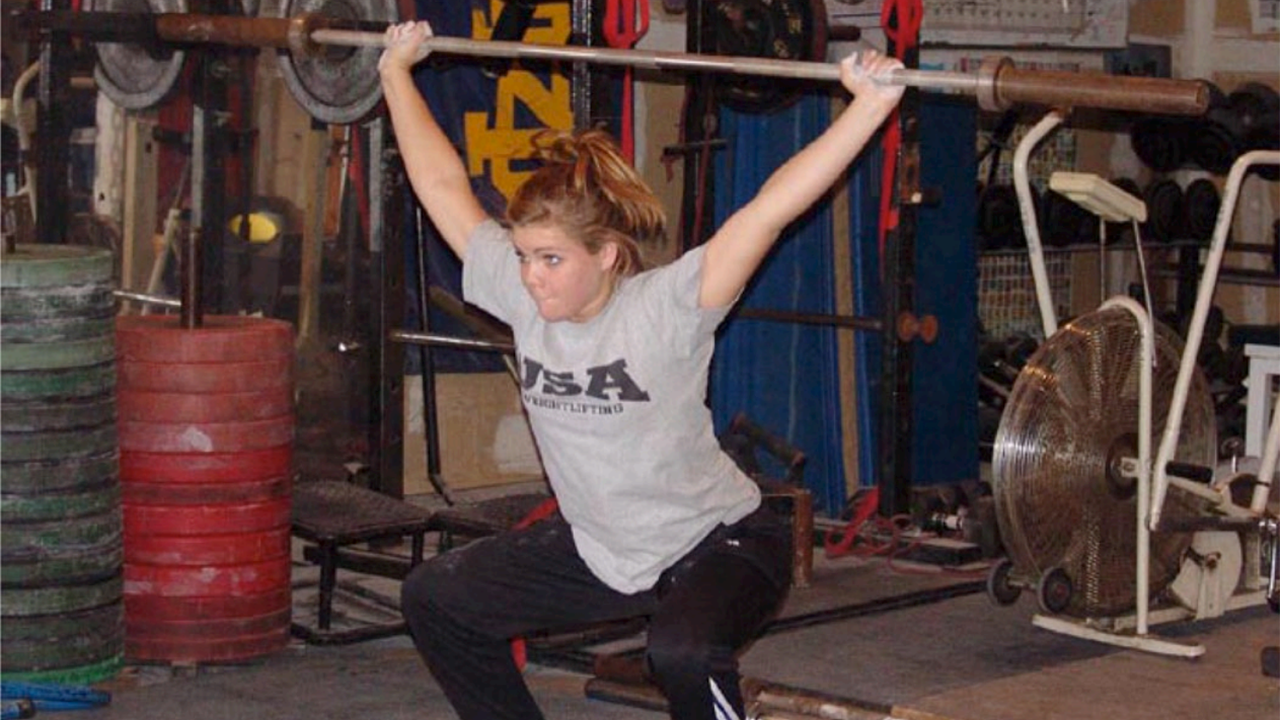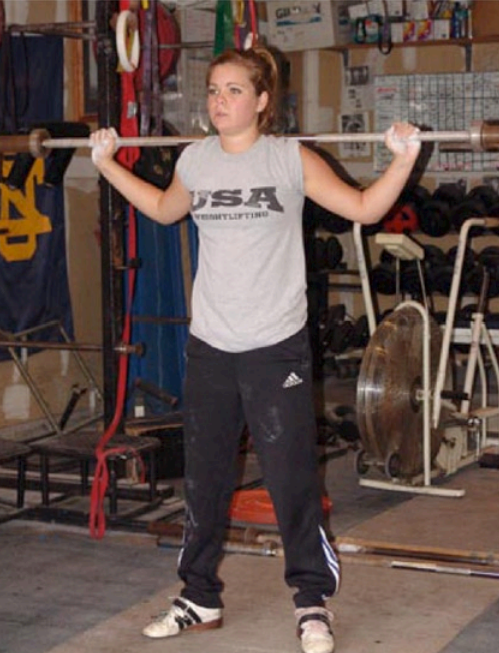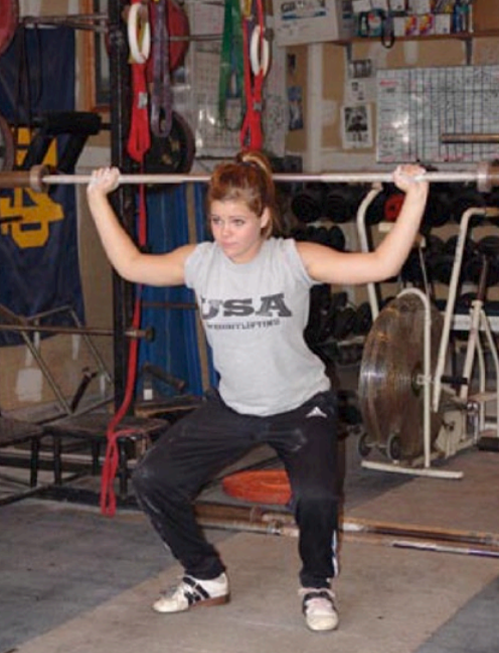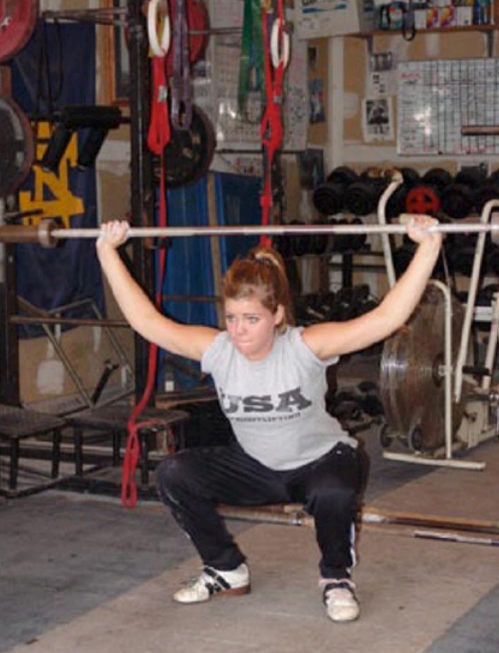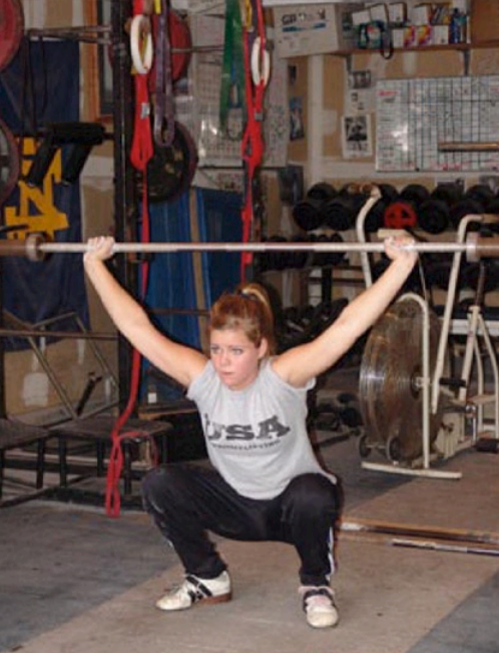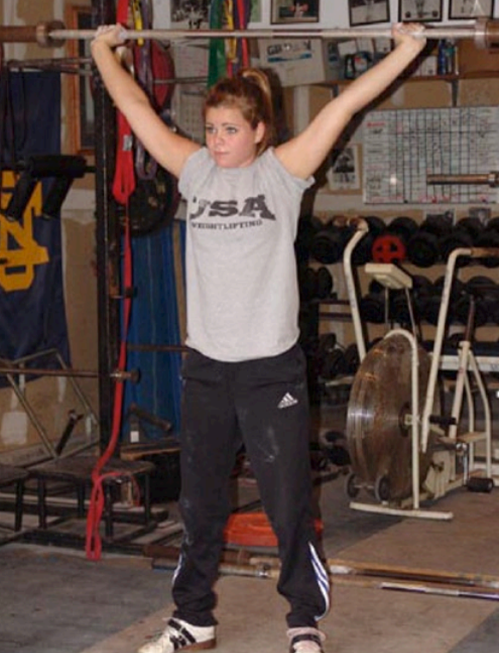In our August issue we explored the overhead squat, which we billed as “the ultimate core exercise, the heart of the snatch, and peerless in developing effective athletic movement.” This month we introduce three skill-transfer exercises based on the overhead squat and commonly used by weightlifters to develop the snatch.
To learn to perform and coach these exercises correctly, we ventured to Mike’s Gym, a CrossFit Affiliate, in Bonsall, California, to learn firsthand from Coach Mike Burgener and his 15-year-old daughter, Sage, how to perform these exercises correctly. Mike is the current U.S. Pan American Games coach, and Sage is a nationally competing junior champion.
The three exercises are known as the pressing snatch balance, the heaving snatch balance, and the snatch balance. Each essentially demands successively greater dynamics and athleticism to reach, hold, and control the catch position of the snatch—which is, in fact, the bottom of the overhead squat.
Each of the three snatch balance exercises begins with the bar in a racked position on the upper back, as for the back squat. Starting with bar on the back, rather than in the front rack position, gives the athlete greater control and easier access to a line of action that is truly upward and not derivative.
Each exercise begins from standing, bar on the back, with a snatch grip. In the pressing snatch balance the athlete slowly lowers the hips into a squat while simultaneously extending the arms to press the bar overhead. In the heaving snatch balance the athlete executes a very short and powerful “dip and drive” to initiate the movement (bending briefly at the knees and hip and then powerfully extending to drive the bar upward) and then comes to rest at the bottom of the overhead squat.
Both the pressing snatch balance and the heaving snatch balance begin and end with the feet slightly wider than shoulder width, the same as in the catching stance of the clean and the snatch, which is also the squatting stance of the rock-bottom overhead squat.
The snatch balance, in contrast, begins in a narrower stance, with feet directly under the hips—the pulling stance that is the starting position for the clean and the snatch (what Coach Burgener often calls the “jumping stance”). The snatch balance requires the athlete to initiate the movement with a strong dip and drive, then dive under the bar and move the feet to land in the slightly wider catching stance with the bar overhead—all
explosively and in an instant.
The pressing snatch balance and the heaving snatch balance are more commonly used for beginning and intermediate lifters, whereas the snatch balance and overhead squat are typically used with experienced weightlifters.
Each of these exercises, not unlike the overhead squat, must be learned, practiced, refined, and perfected with a dowel or PVC pipe before any appreciable weight is introduced. Practicing in this manner—with negligible load—constitutes an excellent warm-up tool that not only readies the athlete for more rigorous work but
also reinforces fundamental mechanical skills vital to more athletic and complex movement.
Generally, weightlifters will be able to handle more weight in the snatch balance than in the snatch. The boost this gives to confidence and control with maximum snatch loads is one of the primary benefits to training the snatch balance family. At any given weight, the dynamics of the snatch are wickedly greater than those
of the overhead squat. The snatch balance can help bridge that gap.
Pressing Snatch Balance
Heaving Snatch Balance
Snatch Balance
This article, by BSI’s co-founder, was originally published in The CrossFit Journal. While Greg Glassman no longer owns CrossFit Inc., his writings and ideas revolutionized the world of fitness, and are reproduced here.
Coach Glassman named his training methodology ‘CrossFit,’ which became a trademarked term owned by CrossFit Inc. In order to preserve his writings in their original form, references to ‘CrossFit’ remain in this article.
Greg Glassman founded CrossFit, a fitness revolution. Under Glassman’s leadership there were around 4 million CrossFitters, 300,000 CrossFit coaches and 15,000 physical locations, known as affiliates, where his prescribed methodology: constantly varied functional movements executed at high intensity, were practiced daily. CrossFit became known as the solution to the world’s greatest problem, chronic illness.
In 2002, he became the first person in exercise physiology to apply a scientific definition to the word fitness. As the son of an aerospace engineer, Glassman learned the principles of science at a young age. Through observations, experimentation, testing, and retesting, Glassman created a program that brought unprecedented results to his clients. He shared his methodology with the world through The CrossFit Journal and in-person seminars. Harvard Business School proclaimed that CrossFit was the world’s fastest growing business.
The business, which challenged conventional business models and financially upset the health and wellness industry, brought plenty of negative attention to Glassman and CrossFit. The company’s low carbohydrate nutrition prescription threatened the sugar industry and led to a series of lawsuits after a peer-reviewed journal falsified data claiming Glassman’s methodology caused injuries. A federal judge called it the biggest case of scientific misconduct and fraud she’d seen in all her years on the bench. After this experience Glassman developed a deep interest in the corruption of modern science for private interests. He launched CrossFit Health which mobilized 20,000 doctors who knew from their experiences with CrossFit that Glassman’s methodology prevented and cured chronic diseases. Glassman networked the doctors, exposed them to researchers in a variety of fields and encouraged them to work together and further support efforts to expose the problems in medicine and work together on preventative measures.
In 2020, Greg sold CrossFit and focused his attention on the broader issues in modern science. He’d learned from his experience in fitness that areas of study without definitions, without ways of measuring and replicating results are ripe for corruption and manipulation.
The Broken Science Initiative, aims to expose and equip anyone interested with the tools to protect themself from the ills of modern medicine and broken science at-large.
Support the Broken Science Initiative.
Subscribe today →
